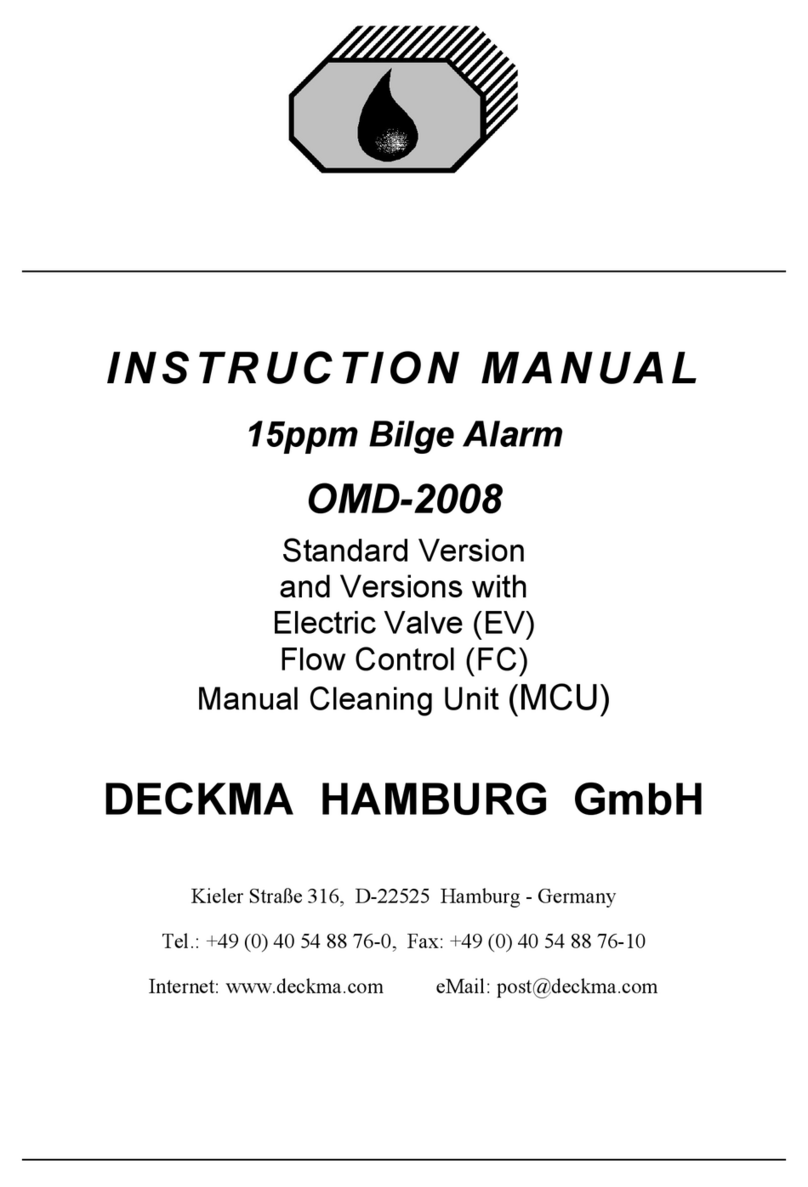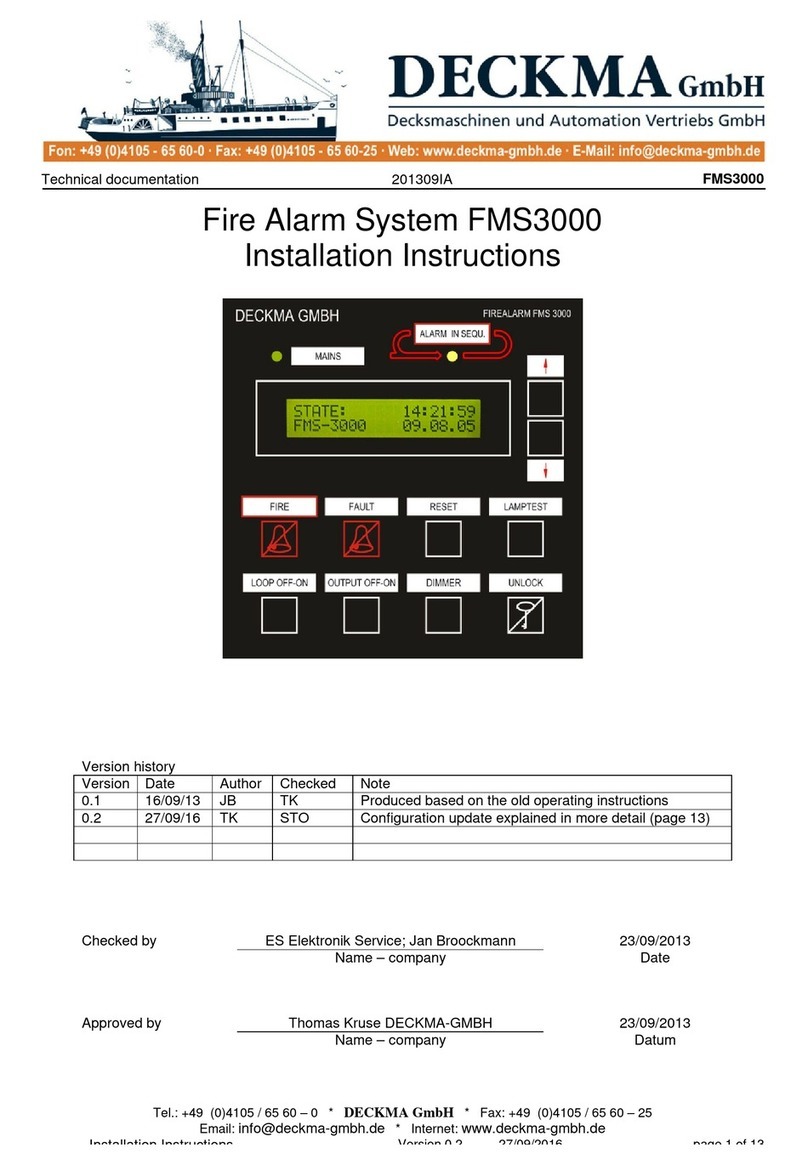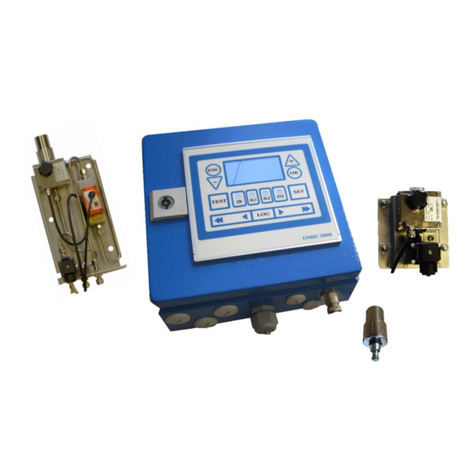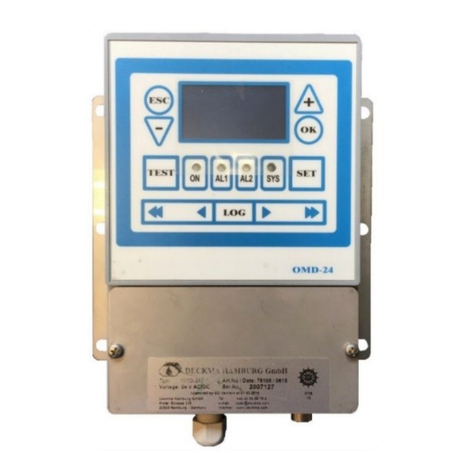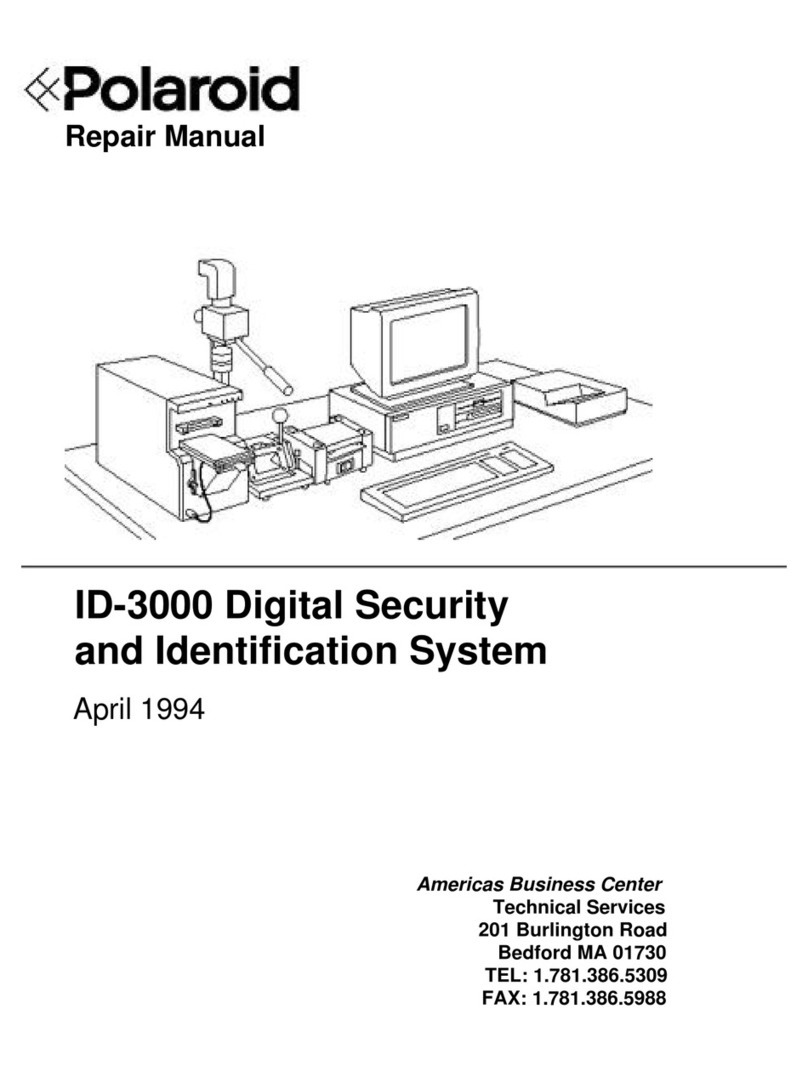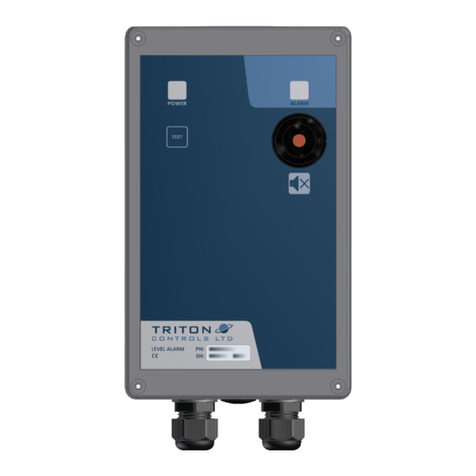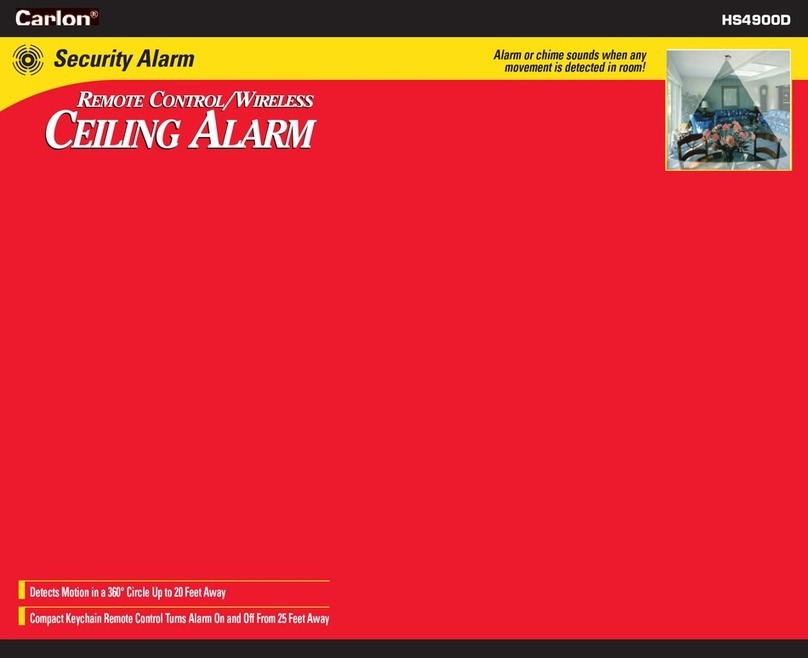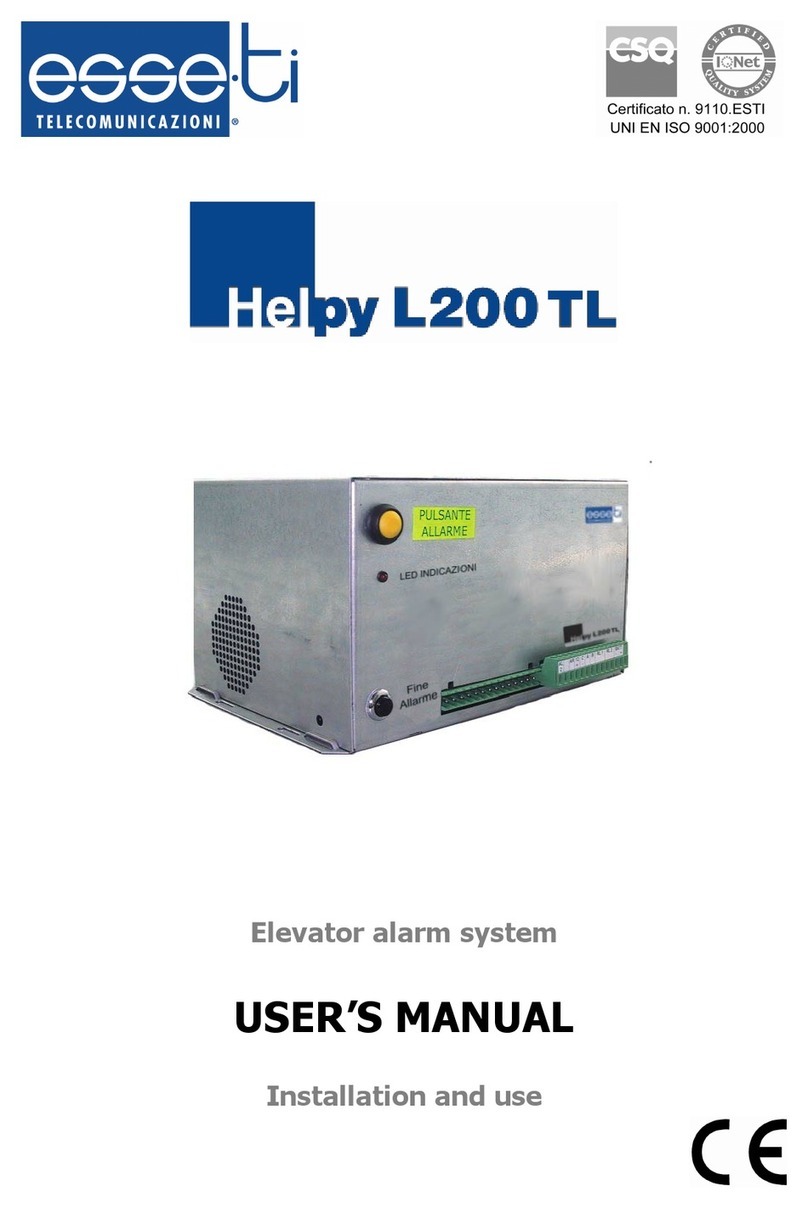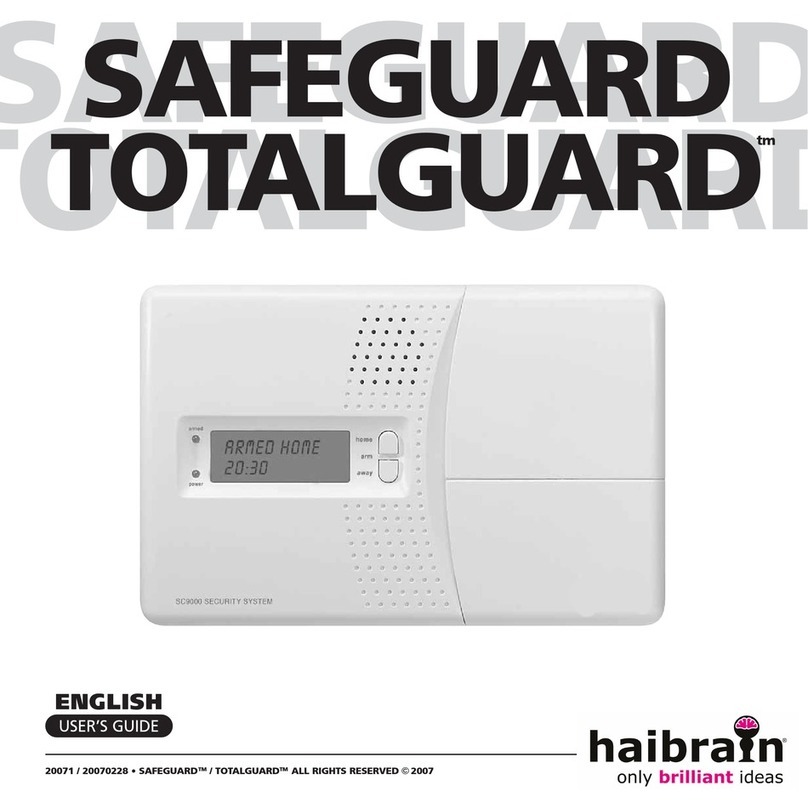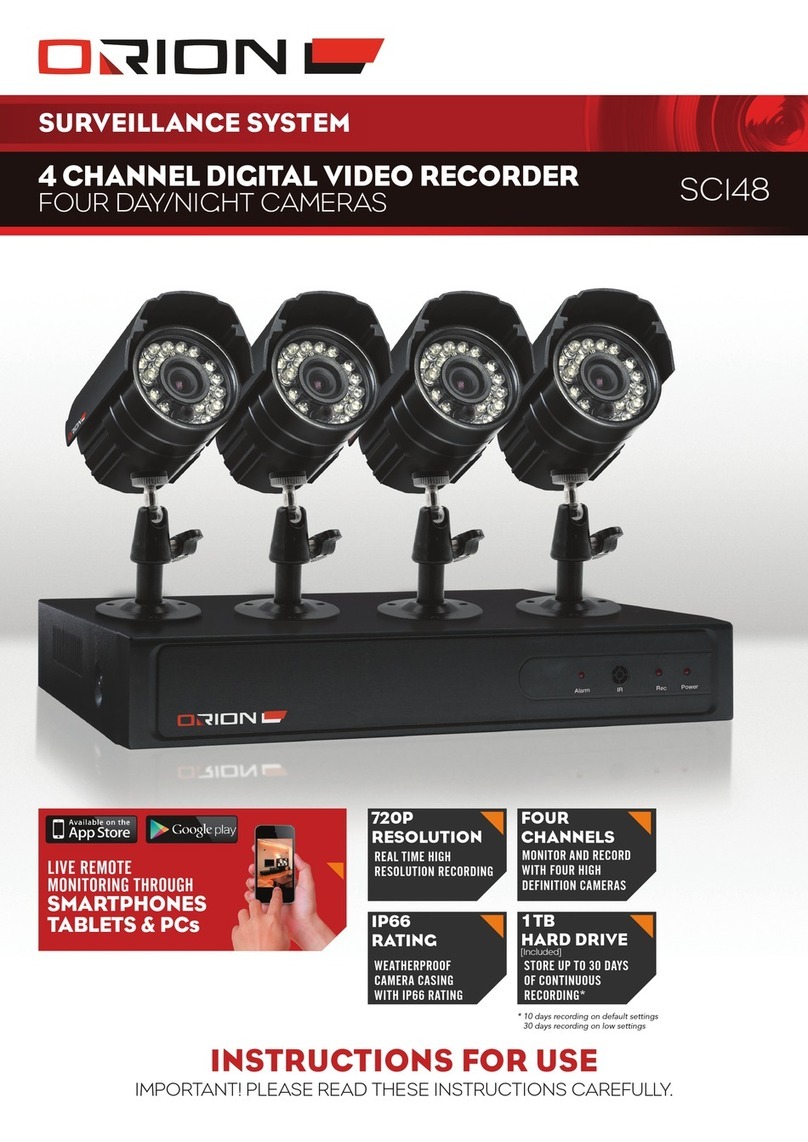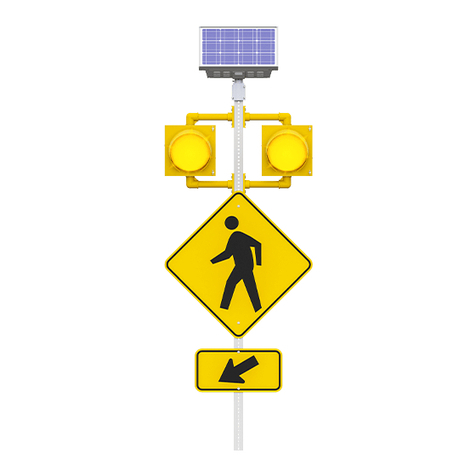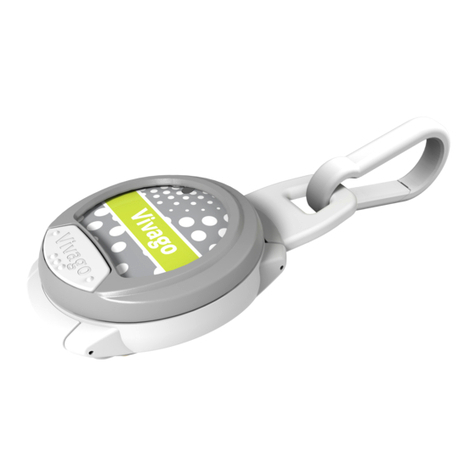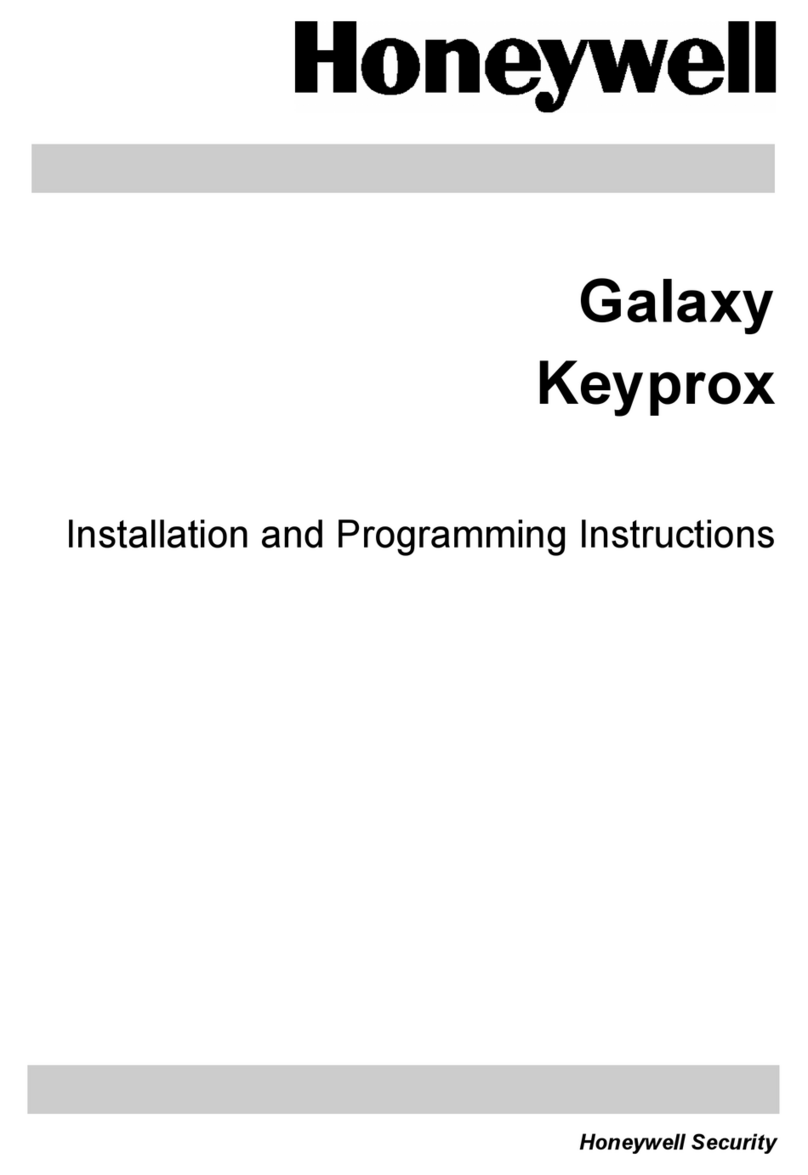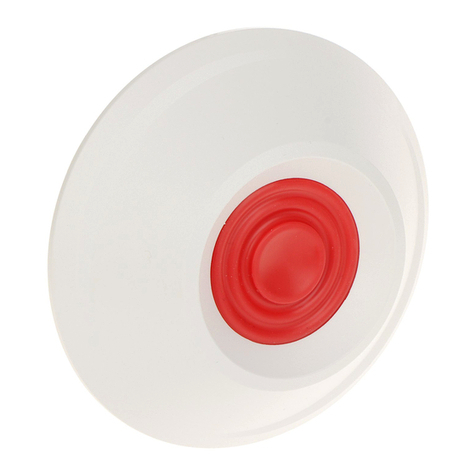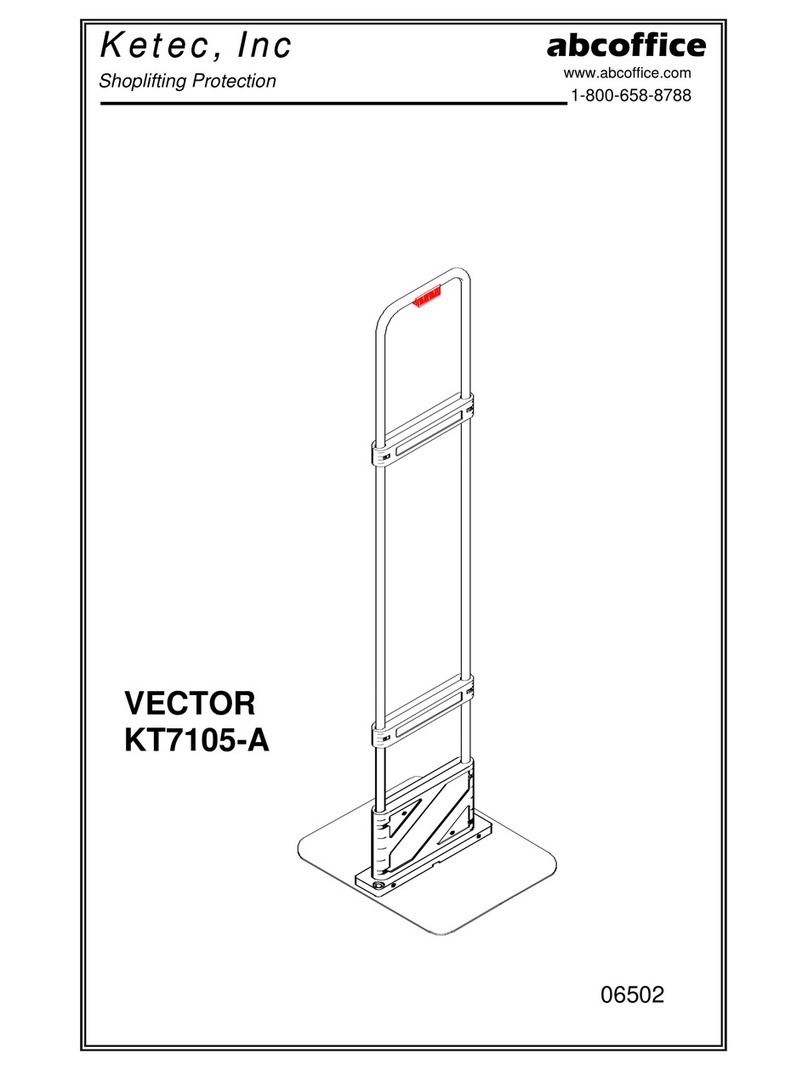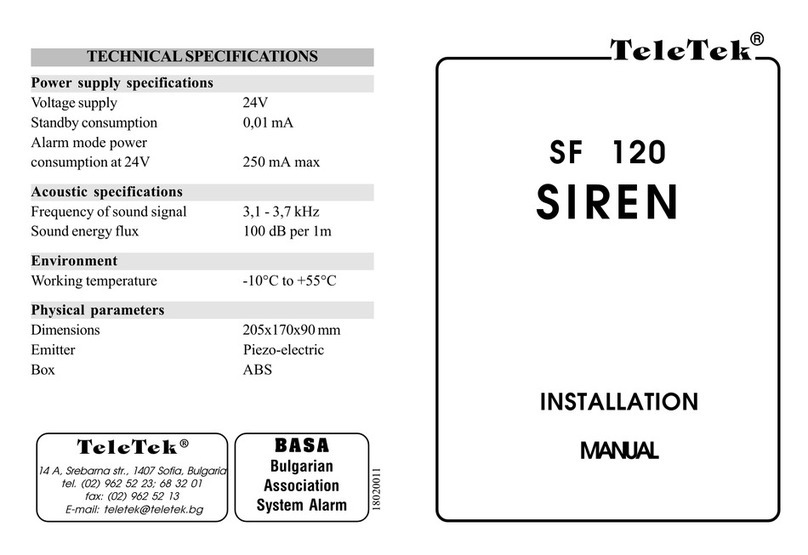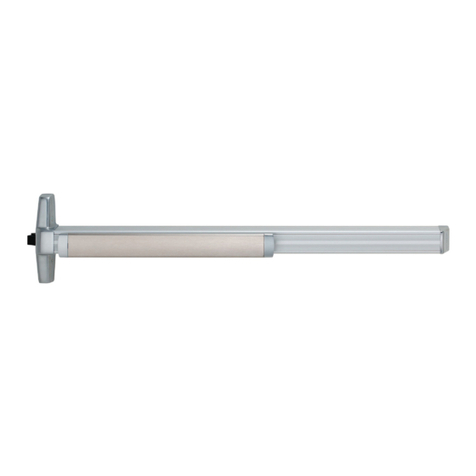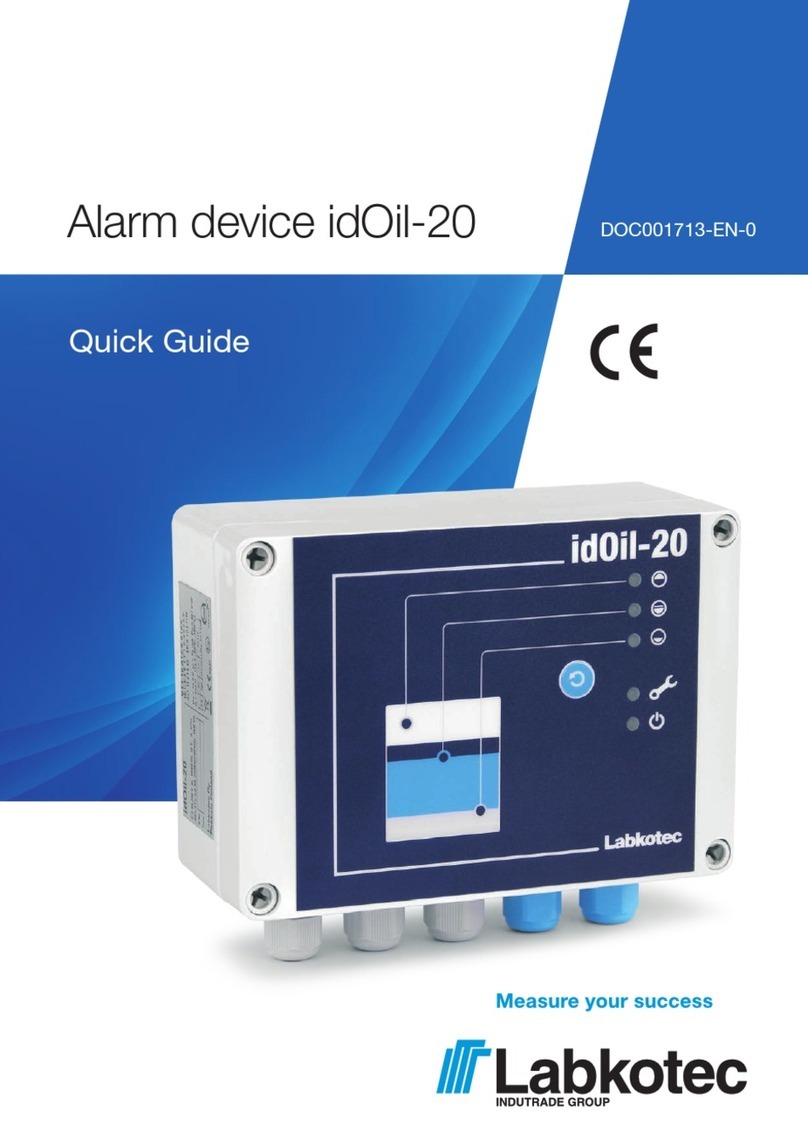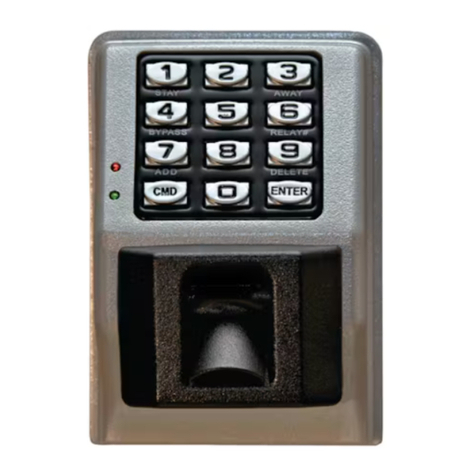Deckma Hamburg OMD-2005 User manual

INSTRUCTION MANUAL
15ppm Bilge Alarm
Type OMD-2005
DECKMA HAMBURG GmbH
Kieler Straße 316, D-22525 Hamburg - Germany
Tel.: +49 (0) 40 54 88 76-0, Fax: +49 (0) 40 54 88 76-10
StockCheck.com

DECKMA HAMBURG GmbH
Issue: 27.05.08 Instruction Manual OMD-2005 Page 2 of 25
IMPORTANT NOTICE
Replacement components for 15ppm Bilge Alarms.
General
All monitors in our range are inspected and tested to the related I.M.O. requirements at
our factories prior to delivery.
In normal use the units should operate correctly and without fault over a long period of
time requiring only small amounts of maintenance to be carried out as outlined in the
instruction manuals.
Service Exchange Units
In the event of a monitor malfunction due to electrical or electronic component failure it
is our recommendation that a service exchange unit be ordered.
The defective instrument should be returned to our works within 30 days of supplying
the service exchange unit, then only the repair charge is payable. Otherwise the whole
cost of a service exchange unit becomes payable.
This procedure is by far the easiest and most cost effective way of ensuring the monitor
on board conforms to I.M.O. resolution MEPC.107 (49).
Remark:
According the MEPC.107(49) § 4.2.11 the unit has to be checked at IOPP Certificate
renewal survey by the manufacturer or persons authorized by the manufacturer.
Alternatively the unit may be replaced by a calibrated 15 ppm Bilge Alarm. The OMD-
2005 is designed in that way, that only the measuring cell needs to be changed, as this
unit carry the calibration onboard. The Calibration Certificate with the date of the last
calibration check should be retained onboard for inspection purposes.
If for some reasons the computer unit needs to be changed, it has to make sure, that
the memory card will remain on board for at least 18 month. The new computer unit will
carry its own memory card. The old card can be insert into the new unit only for reading.
Writing is only possible with the card delivered with the new computer unit. For details
see section 13.1.
Warranty
Our warranty terms are12 months after installation but maximal 18 months after delivery
ex works. The maker undertakes to remedy any defect resulting from faulty materials of
workmanship except wearing parts.
The maker's obligation is limited to the repairs or replacement of such defective parts by
his own plant or one of his authorized service stations.
The purchaser shall bear the cost and risk of transport of defective parts and repaired
parts supplied in replacement of such defective parts.
ANY DISMANTLING OR BREAKING OF A SEAL WILL VOID THE WARRANTY
StockCheck.com

DECKMA HAMBURG GmbH
Issue: 27.05.08 Instruction Manual OMD-2005 Page 3 of 25
CONTENTS
SECTION TITLE PAGE
1.0 Introduction 4
2.0 Important Notes 4
3.0 Principle of Operation 4
3.1 Measuring Principle 4
3.2 Features 5
3.3 Adjustment 5
3.4 Displays and Alarms 5
4.0 Specification 7
5.0 Construction 8
6.0 Installation 9
7.0 Piping 10
8.0 Wiring 11
8.1 Typical Control System 13
9.0 Power Supply 13
10.0 Commissioning 13
10.1 Electrical 13
10.2 Piping 13
10.3 Functional Tests 14
10.4 Programming Mode 15
11.0 Operating Instructions 17
11.1 Operator Notes 18
12.0 Operator Maintenance 18
12.1 Manual Cell Clean Unit 19
13.0 Fault Finding 20
13.1 Memory Card 22
14.0 Calibration 23
14.1 Calibration and Repeatability Check 23
15.0 Spare Parts 24
15.1 Recommended On Board Spares 24
16.0 Remarks 25
StockCheck.com

DECKMA HAMBURG GmbH
Issue: 27.05.08 Instruction Manual OMD-2005 Page 4 of 25
1.0 INTRODUCTION
The OMD-2005 Bilge Alarm Unit has been designed specifically for use in
conjunction with 15 ppm oil-water separator units and has a specification and
performance which exceeds the requirements of the International Maritime
Organization specifications for 15ppm Bilge Alarms contained in Resolution
MEPC. 107 (49).
The unit is supplied with 2 works-adjusted alarms at 15 ppm. Other set points
(10 ppm or 5 ppm) are possible and can be adjusted on site at any time by using
the buttons at the front panel.
If an alarm set point is exceed, the alarms are visible at the front panel and the
appropriate relays are switched. In case of malfunction the System LED at the
front panel will change from blinking green to permanent red and the appropriate
relay will switch the contacts.
For the data logging function the unit requires an status input from the separator
and a feedback signal from the valve position limit switch. (See Fig. 1, Pos.6)
Furthermore a 0(4) - 20 mA (equal to 0 - 30 ppm) signal output is available for
driving a recorder or external meter.
2.0 IMPORTANT NOTES
a) This equipment must be installed and operated in strict accordance with the
instructions contained in this manual. Failure to do so will impair the protection
provided.
b) Installation and servicing must be undertaken by a competent and suitable
skilled person.
c) The equipment must be connected to the ground according relevant
requirements.
d) The unit must be isolated from the electrical supply before any maintenance of
the equipment is attempted.
e) All National or local codes of practice or regulations must be observed and,
where applicable, are deemed to take precedence over any directive or
information contained in this manual.
f) In case of freezing conditions the measuring cell should be emptied complete.
StockCheck.com

DECKMA HAMBURG GmbH
Issue: 27.05.08 Instruction Manual OMD-2005 Page 5 of 25
3.0 PRINCIPLE OF OPERATION
3.1 Measuring Principle
An optical sensor array measure a combination of light scattered and absorbed
by oil droplets in the sample stream. The sensor signals are then processed by a
microprocessor to produce linearised output.
If an alarm (works set point 15 ppm) occurs, the two oil alarm relays are activated
after the adjusted time delay.
The microprocessor continuously monitors the condition of the sensor
components and associated electronics to ensure that calibration accuracy is
maintained over time and extremes of environmental conditions.
3.2 Features
•Robust construction
•Automatic voltage selection
•Solid suppression capability
•Low maintenance
•Easy installation
•Constant readiness
•Low spare part stock holding
•Watertight Housing
•Works adjustment
•Easy settings via menu
3.3 Adjustment
The unit is delivered with a works calibration according the IMO-requirements.
The alarm points are set to 15 ppm.
The "Zero" point is also works calibrated and can be re-adjusted on site by using
the programming mode and clean water. See Section 10.4 “Service-Offset”. A
calibration is not permitted. This has to be done according IMO Regulations by
the manufacturer or persons authorized by the manufacturer.
3.4 Displays and Alarms
In the unit are two independent oil alarm circuits available. Both can be set
separately from 1 to 15 ppm. From the manufacturing both alarms are set to
15 ppm (according IMO). The set points can be changed according to the
requirements on site, for example to 10 ppm or 5 ppm. An alarm point setting
above 15 ppm is not possible. The adjustment can be done in the programming
mode as described in Section 10.4.
In this mode also the individual adjustment of the time delays for the alarms and
the possible changing between 0 - 20 mA or 4 - 20 mA output can be done.
StockCheck.com

DECKMA HAMBURG GmbH
Issue: 27.05.08 Instruction Manual OMD-2005 Page 6 of 25
Both alarm circuits are also related to an alarm LED on the front panel.
In case of malfunction the “System” LED will indicate any type of internal fault of
the unit. This LED is flashing green in normal conditions and is red in alarm
conditions. Also this alarm is related to an relay output.
Additional to the alarm LED's each alarm circuit is equipped with a relay with
potential free alarm contacts. These contacts can be used for external processing
of the signal or for control of further functions.
If a malfunction or failure of the power supply occurs, all 3 relays will switch to
alarm condition.
StockCheck.com

DECKMA HAMBURG GmbH
Issue: 27.05.08 Instruction Manual OMD-2005 Page 7 of 25
4.0 SPECIFICATION OMD-2005
Range: 0 – 30 ppm, Trend up to 50 ppm
Accuracy According IMO MEPC. 107(49)
Linearity Up to 30 ppm better than ± 2 %
Display Green Graphic Display
Power Supply: 24 V – 240 V AC or DC
Automatic Voltage Selection
Consumption: < 15 VA
Alarm Points 1 + 2: Adjustable between 1 - 15 ppm
(Works adjustment 15 ppm)
Alarm 1 Operating Delay:
(for annunciation purpose) Adjustable between 1 – 540 sec.
(Works adjustment 2 sec)
Alarm 2 Operating Delay:
(for control purposes) Adjustable between 1 – 10 sec.
(Works adjustment 10 sec)
System Fault Alarm: Red LED
Alarm Contact Rating: Potential free 1 pole change over
contacts, 3 A / 240 V
Alarm Indication: Red LED's
Output Signal: 0 – 20 mA or 4 – 20 mA for 0-30 ppm
reversible, ext. Load < 150 Ω
Sample Water Pressure: 0,1 – 10 bar
Sample Flow: Approx. 0,1 - 4 l/min depend. to pressure
Ambient Temperature: + 1 to + 55° C
Sample Water Temperature: + 1 to + 65° C
Roll: Up to 45°
Size (over all): 360 mm W x 240 mm H x 100 mm D
Degree of Protection: IP 65
Weight: 7,3 kg
Pipe Connections: R ¼" Female
StockCheck.com

DECKMA HAMBURG GmbH
Issue: 27.05.08 Instruction Manual OMD-2005 Page 8 of 25
5.0 CONSTRUCTION
There are 3 main parts which contained in an OMD-2005:
The computer unit is mounted into an epoxy powder painted steel housing
to protect the electronics of the display PCB with the data logger and the
main board PCB with the terminals for external connections.
The measuring cell is built out of an anodized all-aluminium body with inlet
and outlet block in stainless steel. This rugged cell contains the optical
electronic and correspond with the computer unit via a plugged data cable.
The valve assembly contains a special handle to sense the position of the
valve. This assembly is connected to the measuring cell by an easy to
handle fitting to enable the exchange of the cell for frequently adjustment
according the IMO requirements.
All components are mounted to a stainless steel mounting plate for easy wall or
bulkhead installation. It is also possible to split the computer unit from the
measuring cell if the available space is not sufficient. For this version divided
mounting plates are available.
ON
OMD-2005
Oil Monitoring Device
Alarm 1 Alarm 2System
OK
DECKMA HAMBURG
www.deckma.com
SAMPLE 1/4"
CLEAN WATER 1/4"
OUT 1/4"
DECKMA HAMBURG
DH 75450
1 Computer Unit 5 Handle 9 3/2 Way Valve
2 Head Screw 6 Limit Switch 10 Mounting Plate
3 Fitting 7 Spacer 11 Desiccator
4 Measuring Cell 8 Valve Plate 12 Communication Cable
Fig. 1
StockCheck.com

DECKMA HAMBURG GmbH
Issue: 27.05.08 Instruction Manual OMD-2005 Page 9 of 25
6.0 INSTALLATION
(Refer to Fig. 2 and Fig. 3)
See Section 2 for important notes concerning installation.
The OMD-2005 Monitor should be located as close as possible to the oily water
separator to minimize response delays. According MEPC.107(49) the layout of
the installation should be arranged so that the overall response time (including
the response time of the 15 ppm Bilge Alarm, which is less than 5 s.) between an
effluent discharge from the 15 ppm Bilge Separator exceeding 15 ppm, and the
operation of the Automatic Stopping Device preventing overboard discharge,
should be as short as possible and in any case not more than 20 s.
Mount the OMD-2005 Monitor by means of 6 x M8 screws on to a rigid vertical
surface and preferably with the display panel of the monitor at eye level. For
service and maintenance sufficient space to all sides should be available.
Care must be taken at mounting of the pipes connections to avoid any torsion of
the housing and damage of the instrument.
ON
OMD-2005
Oil Monitoring Device
Alarm 1 Alarm 2System
OK
DECKMA HAMBURG
www.deckma.com
SAMPLE 1/4"
CLEAN WATER 1/4"
OUT 1/4"
DECKMA HAMBURG
DH 75450
Fig. 2
StockCheck.com

DECKMA HAMBURG GmbH
Issue: 27.05.08 Instruction Manual OMD-2005 Page 10 of 25
7.0 PIPING
(Refer to Fig. 3)
Connect the OMD-2005 Monitor to the sample point of the oily-water separator
outlet and to a source of oil free water employing 10 mm OD copper or stainless
steel pipe. The sample point should be located on a vertical section of the
separator outflow piping to minimize the effects of any entrained air. The tapping
point should be at a level above the outlet of the monitor to ensure the sample
cell is flooded at all times.
If connection to a vertical section of the separator outlet piping is impractical, the
tapping may be made into the side of the horizontal pipe. Avoid top or bottom
entry.
For separator discharge pipes up to 75 mm OD a standard "T"-type junction of
the welded or screwed type is satisfactory for the tapping point. For the separator
discharge pipes of 80 mm OD and above a sample probe should be employed
which protrudes into the discharge piping by approx. 25 % of the ID of the pipe.
Separator
Outlet Separator
Clean Water
Supply (Option)
Outlet
*
10 X 1mm
Copper Tube
Vacuum breaker
Overboard discharge
Pressure relief valve
(if required)
To Bilge
*
Inlet & Outlet connections R1/4" Female
Fig. 3
To BilgeTo Bilge
Recirculating
Facilities
Automatic
Stopping Device
ON
OMD-2005
Oil Monitoring Device
Alarm 1 Alarm 2 System
OK
DECKMA HAMBURG
www.deckma.com
DECKMA HAMBURG
DH 75450
StockCheck.com

DECKMA HAMBURG GmbH
Issue: 27.05.08 Instruction Manual OMD-2005 Page 11 of 25
8.0 WIRING
(Refer to Fig. 4 + 5)
See Section 2 for important notes concerning wiring.
This unit must be connected to the mains supply via a suitable rated and
approved fused isolator unless such fusing / isolation is provided by associated
equipment. When fitted, the isolator should be close, readily accessible and
marked as to function.
Electrical connections are made through the metric cable gland openings
prepared underneath the instrument.
Fig. 4
Precise wiring details will vary dependent upon the control system to be
employed but the most frequently used systems employ alarm relay 1 for alarm
only and alarm relay 2 for control purposes.
Electrical connections are made to the terminal blocks inside the computer
housing. Wires are connected to the terminals by pushing a suitable screwdriver
into the clamp holes to release the internal spring loaded clamps. After the wire is
inserted to the terminal and the screwdriver is removed, the wire is fixed.
If the instrument is operated at high voltages, additional care has to be taken to
provide reliable ground connections. Ground (PE) can be connected direct to the
terminal or, if this is not sufficient according local rules, to the computer housing
left side. In this case the plug needs to be replaced by a M6 screw with nut and
related washers.
The instrument provides a pilot voltage output at terminals 4&5. This is internally
connected to the power supply input (Terminals 1&2), but is fused by Fuse F1 (2
A). The pilot voltage can be used to supply additional external circuitry, e.g. alarm
lamps or electrical valves.
Please note: any device connected to the pilot voltage output must be rated for
the voltage the instrument is supplied with. Do not use the pilot voltage for driving
motors, heaters or other high load devices. The pilot voltage is intended for alarm
purposes only.
StockCheck.com

DECKMA HAMBURG GmbH
Issue: 27.05.08 Instruction Manual OMD-2005 Page 12 of 25
Signal Output
0(4)-20 mA
To Alarmsystem
3/2 Way Valve
Automatic Stopping Device
Power Supply Air Supply
Solenoid Valve
123
19 20 21 22 23 24 25 26 27 28 29 30 31 32 33
Measuring
Cell Logger /
Display
F2F1 Res.PILOT V
24-240V IN FLOW STATUS RES OUTPUT CLEAN
PE PE PE
+-
PE PE
LNPE
456
PILOT OUT
LNPE
789
ABPE
RES
13 14 15
NO COM NC
ALARM 2
16 17 18
NO COM NC
10 11 12
NO COM NC
ALARM 1 SYSTEM FAULT
1A2A
Contacts shown
in Alarm condition
(de-energised)
Status
Separator
Limit
Switch
To Alarmsystem
(optional)
1-2 Power Supply
4-5 Pilot Voltage Output (Same as Power Supply)
7-8 Spare Voltage Output (Same as Power Supply)
10-12 Potential free Output Alarm 1 (Change over contact)
13-15 Potential free Output Alarm 2 (Change over contact)
16-18 Potential free Output System Fault (Change over contact)
19-20 Input Flow Direction Switch (Deckma Delivery)
22-23 Input Status Switch from Separator (Close when running)
25-26 Input Spare Switch
28-29 Signal Output 0(4) to 20 mA
31-32 Optional Output for Autoclean Valve
EXAMPLE
Connections may vary
with different separator
control boxes
Fig. 5
Close front door complete after electrical installation. Water inside the instrument
may result in corrosion and malfunction.
StockCheck.com

DECKMA HAMBURG GmbH
Issue: 27.05.08 Instruction Manual OMD-2005 Page 13 of 25
8.1 Typical Control System
The installation on site has to make sure that in case of any loss of power supply
and/or loss of air supply for the automatic stopping device the overboard
discharge valve close the overboard line and open the re-circulating line.
The system showed in the example, employs alarm relay 2 to control a
pneumatic solenoid valve which energises or de-energises a pneumatically
operated 3 - way valve as depicted in Fig. 5.
The separation process will continue until such time as the pollution level falls
below the alarm set point at which time the discharge will be directed overboard.
A pump stop system is according MEPC.107 (49) not allowed.
9.0 POWER SUPPLY
See Section 2 for important notes.
The unit is designed for a power supply of 24 V to 240 V AC or DC. It has an
automatic power selection.
10.0 COMMISSIONING
See Section 2 for important notes.
On completion of the installation, wiring and piping carry out the following checks:
10.1 Electrical
a) Check that the power supply is connected to the terminals 1 + 2 of the
terminal block.
b) Check the wiring of the automatic stopping device and to the alarm system is
according the IMO Requirements.
c) Check that the grounding has been made according to the relevant
regulations.
10.2 Piping
a) Check all piping connections for leaks and rectify as appropriate.
StockCheck.com

DECKMA HAMBURG GmbH
Issue: 27.05.08 Instruction Manual OMD-2005 Page 14 of 25
10.3 Functional Tests
a) Run oil free water through the instrument to purge the system.
b) Adjust the flow rate through the unit by using the small screws in the cell cap
(Fig. 1, Pos. 2). Taking out a screw will increase the flow rate.
NB: The flow rate should be checked on both, the clean water supply and the
separator sample supply. If the clean water supply is obtained from a high
pressure source, the flow rate will be higher than from the sample point.
The flow rate is not influencing the accuracy of the instrument. The adjustment
is only important for the time delay between the sample point and the monitor.
c) Switch on the instrument and make sure, that the Power LED is illuminated
and the display is
showing the initializing
display for about 15
sec. After that time it
will change to the
standard display,
showing the actual measurement.
d) During oil free water is running through the monitor check the Zero adjustment
according Section 11. The display should be "0" to “2” and the status will show
“FW”. If the display varies by greater amounts, it may be that air entrainment is
present. If this is the case, the cause must be located and rectified.
f) If the Zero need to be adjusted, this can be done in the programming mode as
described in section 10.4. (Service – Offset)
StockCheck.com

DECKMA HAMBURG GmbH
Issue: 27.05.08 Instruction Manual OMD-2005 Page 15 of 25
10.4 Programming Mode
In the programming mode the alarm set points, the time delays, the signal output
and the zero can be modified. It is also possible to recall the factory default
values at any time. The clock is
factory set for GMT, Greenwich Mean
Time, and cannot be changed.
There are 8 push buttons to control
the functions of the display. In general
are the upper buttons for the data
logger and the lower buttons for
changing the display to the different
pages of the menu.
Pressing the OK button will give
more detailed information about
the status
After start the display will show
the initial display followed by
the actual measured oil content.
This display also be shown, if
no input at the different menu’s
has been done for a designated
time
To get into the menu press the
tool button. Select the required
point by using the „+“ or „-„
button. Press the „OK“ button.
At the service menu the alarms,
time delays, the Offset and the
output signal can be modified
within the limitations. Select the
required point by using the „+“
or „-„ button. Press the „OK“
button.
To change the value, press
the “+” or “-“ button. Confirm
with “OK”.
OK
DoubleArrowback
Enter
Arrowforward
DoubleArrowforward
"-"Button
"OK"Button
"+"Button
ToolButton
StockCheck.com

DECKMA HAMBURG GmbH
Issue: 27.05.08 Instruction Manual OMD-2005 Page 16 of 25
Select the required point by
using the „+“ or „-„ button.
Press the „OK“ button.
To change the value, press
the “+” or “-“ button. Confirm
with “OK”.
Select the required point by
using the „+“ or „-„ button.
Press the „OK“ button.
To change the value, press
the “+” or “-“ button. Confirm
with “OK”.
To get into the menu press the
tool button. Select the required
point by using the „+“ or „-„
button. Press the „OK“ button.
The display will show the actual
status of the data logger. To get
back to the standard display
press the tool button or the OK
button.
Function of the scrolling buttons
for both operation time history
displays:
> 15 sec Forward
> and + 2 min Forward
>> Fast Forward
>> and + Very Fast Forward
- 15 sec Backward
- and + 2 min Backward
<< Fast Backward
<< and + Very Fast Backward
Press the “Enter” button to get
into the history. Select the
required date and time by using
the buttons.
The dotted vertical line shows
the actual position.
Press the “Enter” button to
show details
The detailed information of
the selected date and time
will be displayed. To get
back to the history graph,
press the “Enter” Button
again. To get back to the
start display, press the “OK”
button.
StockCheck.com

DECKMA HAMBURG GmbH
Issue: 27.05.08 Instruction Manual OMD-2005 Page 17 of 25
To get into the menu press the
tool button. Select the required
point by using the „+“ or „-„
button. Press the „OK“ button.
The temperature of the
measuring cell and the sample
water will be shown
To get into the menu press the
tool button. Select the required
point by using the „+“ or „-„
button. Press the „OK“ button.
The details of the measuring
cell will be shown.
To get into the menu press the
tool button. Select the required
point by using the „+“ or „-„
button. Press the „OK“ button.
Information about the software
version and the web address
will be shown.
NB: All changed values have to be confirmed by pressing the " OK " button.
Otherwise the existing values are valid.
11.0 OPERATING INSTRUCTIONS
a) Switch on the power supply.
b) Allow a period of time for water entering the sample tube.
c) Flow oil free water through the system for a few minutes and check that the
display show 0 to 2 ppm. If not, clean proper before adjusting the unit
according section 10.4 “Service - Offset”.
d) Switch the instrument sample supply from the clean water supply to the
separator sampling point connection.
e) The instrument is now ready for use.
StockCheck.com

DECKMA HAMBURG GmbH
Issue: 27.05.08 Instruction Manual OMD-2005 Page 18 of 25
11.1 Operator Notes
a) When oily water flows through the instrument the display will show the actual
value of oil content.
b) If the oil concentration exceeds the adjusted threshold (works adjustment
15 ppm), the alarm indicator 1 will be illuminated in intervals during the
selected time delay before it change to steady light and the associated alarm
relay will operate. Accordingly also the alarm indicator 2 will be illuminated
and its associated alarm relay will take the appropriate shut down action.
12.0 OPERATOR MAINTENANCE
See Section 2 for important notes.
AT WEEKLY INTERVALS:
a) Flush the cell with oil free water.
b) Isolate the instrument from both, sample and oil free water supply.
c) Unscrew and remove the cell cap.
d) Insert a suitable Cell Cleaning brush (Art. No. 30102) into the cell and clean it
with upwards and downwards motion through the entire length of the cell
several times.
e) Remove the Cell Cleaning brush and replace the cell cap.
f) Reconnect the oil free water supply and allow this to flow through the
instrument for a few minutes.
g) Observe that the display is showing "0" to “2”. If not, clean again.
h) Examine the color of the desiccator (Fig. 1, Pos. 11). Blue color is indicating
an active moisture absorber. If the color is light blue or white, the desiccator
should be replaced.
The desiccator assures a humidity below 40% inside the measuring cell to
avoid wrong measurement resulting due to condensation at the cell glass tube
and damage of the electronics around the glass tube. The replacement is easy
done without opening the instrument. Just unscrew the old desiccator out of
the front panel and replace it by a new one. The protection cap of the spare
unit can be also used as a tool.
j) Reconnect the instrument to the separator sampling point.
StockCheck.com

DECKMA HAMBURG GmbH
Issue: 27.05.08 Instruction Manual OMD-2005 Page 19 of 25
12.1 Manual Cell Clean Unit
Optional item if fitted
This unit facilitates cleaning of the cell without the need of removing the cell cap.
Regular use of this device should prevent malfunction of the monitor due simply
to fouling of the sample tube and all the inconvenience which this can cause.
Operating Instructions
a) Ensure that the monitor is switched off and that there is a clean water supply
through the cell.
b) Activate the manual cell clean unit by pressing the handle several times.
c) Switch the monitor back on and check the reading is between 0 to 2 ppm.
d) Repeat a) to c) at least once a week or as necessary.
NB: The Manual Cell Clean Unit may also be used during normal operation with
sample water, but in this case an alarm occurs because the wiper is passing the
light source.
Spares: Wiper Seal, Part. No. 30605
StockCheck.com

DECKMA HAMBURG GmbH
Issue: 27.05.08 Instruction Manual OMD-2005 Page 20 of 25
13.0 FAULT FINDING
See Section 2 for important notes.
The OMD-2005 will indicate several malfunctions in the status line of the display.
Pressing the “OK” button will lead into an information window, similar to the items
listed in the table below.
Status Reading
System-Alarm-
circuit Alarm-
circuit 1,2 Reason Servicing
LED Alarm
OK 0..49
Green /
Blinking No Normal
operation Normal operation -
OK EE Green /
Blinking No Alarm Sample reading is out
of range:
Oil content too high,
dirty sample tube
Wait until oil content is
within the range,
clean sample tube
FW ! 0..49 / EE Green /
Blinking No Alarm Freshwater is enabled -
Sample? EE Red /
Steady Yes Alarm Meter is not able to
measure the sample:
no water in, oil content
much too high, no light
transmission possible
Check sample, clean
sample tube
according Page 21
Com? EE Red /
Steady Yes Alarm No communication
between computer unit
and measuring cell
Check connection
between computer
unit and measuring
cell
Datalogging is not
possible:
no DECKMA card in
Insert the active
memory card
Datalogging is not
possible:
a read only card is in
Insert the active
memory card
Datalog? 0..49 / EE Red /
Steady Yes Alarm
Datalogging is not
possible:
a new DECKMA card is
in
Activate card or insert
the active memory
card
Int.Err Red /
Steady Yes Alarm Internal error Restart the system
StockCheck.com
Table of contents
Other Deckma Hamburg Security System manuals
